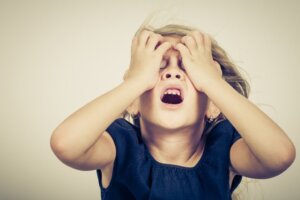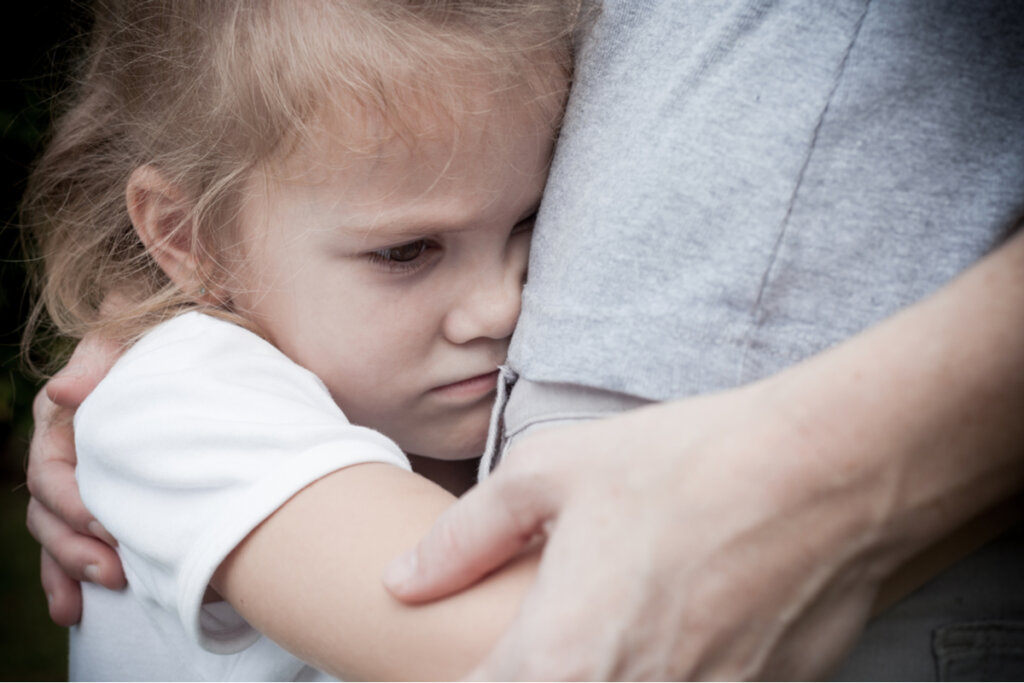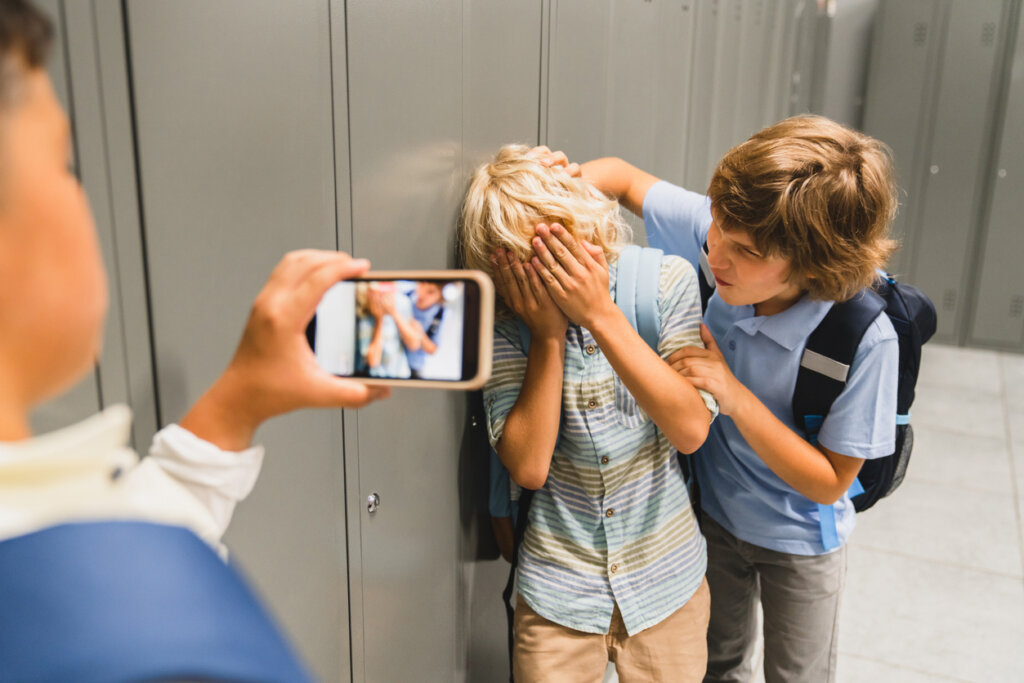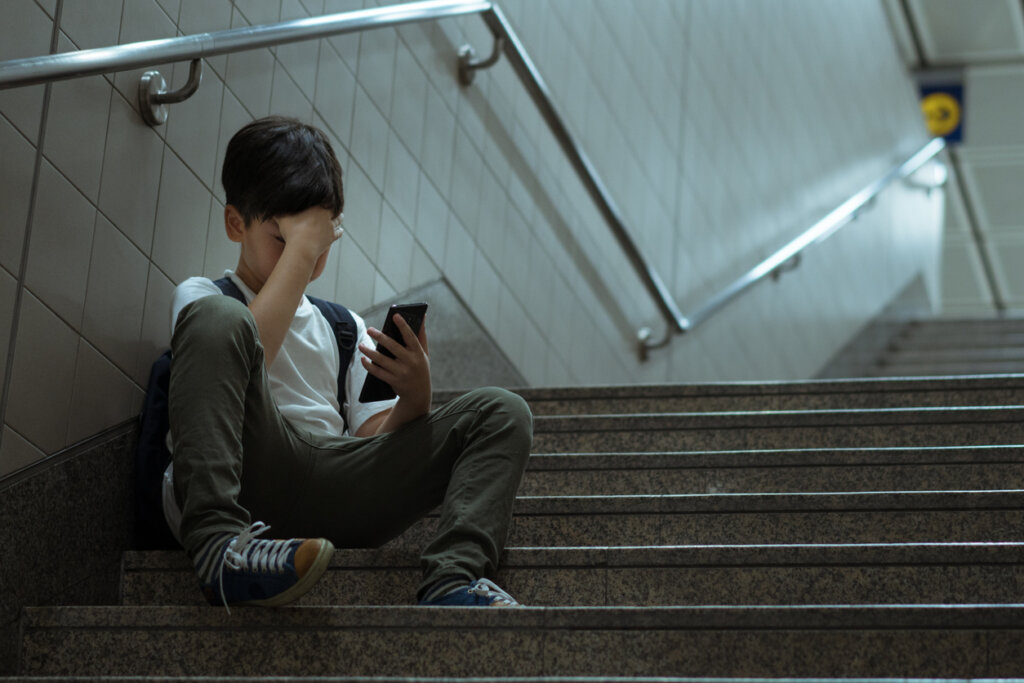The Most Frequent Sources of Childhood Anxiety

Anxiety is often considered something that only affects adults. However, this disorder can also manifest itself in children. That said, parents don’t always know how to identify it. As a matter of fact, there are many sources of childhood anxiety. Knowing about them can be a great help toward the prevention and awareness of this all too real problem.
Centers for Disease Control and Prevention (CDC) claims that childhood anxiety is quite distinct from typical childhood fears and worries. The intensity of the symptoms and their duration are the starting points for its diagnosis. In this article, we’ll talk about the main sources of childhood anxiety and discuss the disorder itself.
How common is childhood anxiety?
Research claims that the prevalence of childhood anxiety could affect up to 20 percent of the world population. Indeed, it’s a very real problem and one that has multiple manifestations.
Specific phobias, post-traumatic stress disorder, selective mutism, panic disorder, generalized anxiety disorder, obsessive-compulsive disorder, and social anxiety disorder are just a few of them.
Anxiety can appear at really early ages, in fact as early as 14 months. Furthermore, most of the anxiety disorders that manifest in the adult stage have their origins in childhood. Evidence suggests that family behaviors and parenting patterns are direct catalysts of these disorders in children.
During the last few decades, a greater awareness of mental disorders has been achieved. Nevertheless, there’s still a long way to go. Parents need to realize that these kinds of episodes are extremely common, and know how to identify them.

The main sources of childhood anxiety
As you might expect, there are many sources of childhood anxiety. Each episode corresponds to specific particularities. Consequently, there doesn’t always have to be a transcendent catalyst for a disorder to make an appearance.
Here are the most important sources of childhood anxiety, as supported by recent research.
1. Family conflicts
Experts warn that family conflicts are one of the main sources of childhood anxiety. Certain parenting styles, fights between parents, divorce proceedings, the relationship between siblings, and the punishment models that are applied, among other elements, can trigger or worsen episodes of childhood anxiety.
The degree of attachment that exists in relation to the child’s parents or caregivers, the autonomy they have, overprotection, and the presence of similar problems in their parents (stress, depression, and others) also have a direct impact. Indeed, family dynamics are really important. In fact, the more stable the family, the less likely it is that the catalyst will originate from this context.
2. Phobias or pathological fears
Fear is present in all children. They’re beginning to build their own vision of reality and assimilate what’s dangerous and what’s harmless. Therefore, it’s fair to say that, to a certain extent, fear is extremely common at this stage. However, for several reasons, the episodes can evolve into specific phobias.
The most accepted theory dictates that, among others, the fear of heights, spiders, separation, and water is an evolutionary remnant. In other words, they were stimuli that were once challenging for us. They arise spontaneously in childhood and, depending on many variables, will either disappear through experience or persist into adulthood.
3. Bullying
Bullying is another direct source of child anxiety. It happens in many ways, since, as we know, physical mediation isn’t necessary to generate trauma.
Experts have discovered that the consequences of bullying can persist into adulthood. In fact, episodes of anxiety and depression are extremely common in people who experienced bullying in childhood.
There are many ways to prevent bullying. The American Psychological Association (APA) recommends that parents and teachers implement an observant attitude, investigate new styles of bullying, establish communication channels with children, and teach them how to manage it.

4. Experiences with death
As we mentioned earlier, children are building and consolidating their interpretation of reality. Therefore, any experience with trauma generates a greater impact on them. The prototypical example is death.
The loss of a family member, a friend, a loved one, or a pet are undoubtedly some of the main sources of childhood anxiety.
Death is a really abstract concept. For this reason, it’s not fully assimilated by the little ones until they experience it in a material way. Depending on its closeness and how it’s managed by their parents, it can be a factor of stress, anxiety, and even child depression. Parents must be aware of this to avoid these outcomes.
5. The overload of responsibilities
In an increasingly competitive world, the responsibilities and demands placed on young people sometimes lead to trauma. This can happen both because of the high expectations and demands at the academic level, and because of the perfectionism that might be demanded of them at home.
Like adults, children require leisure time. If it’s suppressed, it leads to problems such as anxiety.
6. Inappropriate use of social media
It’s no secret that addiction to devices, social media, and the Internet is linked to various physical and psychological problems. Furthermore, the age at which children are exposed to social media is reducing, to the point that even children who are only a couple of years old are often already beginning to venture into this territory.
Improper management of these platforms has repercussions in many ways. To name a few, access to age-inappropriate content, cyberbullying, and sleep disturbances from using devices late at night.
Therefore, parental control is of the utmost importance, as well as the restriction of the time children spend on electronic devices.

7. Improper use of video games
Related to the previous factor, is the addiction to video games. Researchers have found that the inappropriate use of video games can lead to episodes of anxiety, depression, and loneliness. That said, video games aren’t dangerous in themselves, it’s their irresponsible usage that causes problems. Therefore, parents must operate as mediators and control the way in which their children use them.
If you’re a parent, we hope that exposing these sources of childhood anxiety has been useful for you and will help you in taking the appropriate measures. However, if you think that your little one is already experiencing anxiety, don’t hesitate to take them to a specialist. Remember, anxiety disorders can be treated, and it’s best to do so before they worsen in the absence of therapy.
All cited sources were thoroughly reviewed by our team to ensure their quality, reliability, currency, and validity. The bibliography of this article was considered reliable and of academic or scientific accuracy.
- Bhatia, M. S., & Goyal, A. Anxiety disorders in children and adolescents: Need for early detection. Journal of postgraduate medicine. 2018; 64(2): 75.
- Bögels, S. M., & Brechman-Toussaint, M. L. Family issues in child anxiety: Attachment, family functioning, parental rearing and beliefs. Clinical psychology review. 2006; 26(7): 834-856.
- Ginsburg, G. S., Siqueland, L., Masia-Warner, C., & Hedtke, K. A. Anxiety disorders in children: Family matters. Cognitive and Behavioral Practice. 2004; 11(1): 28-43.
- Gladstone, G. L., Parker, G. B., & Malhi, G. S. Do bullied children become anxious and depressed adults?: A cross-sectional investigation of the correlates of bullying and anxious depression. The Journal of nervous and mental disease. 2006; 194(3): 201-208.
- Wang, J. L., Sheng, J. R., & Wang, H. Z. The association between mobile game addiction and depression, social anxiety, and loneliness. Frontiers in public health. 2019; 247.
This text is provided for informational purposes only and does not replace consultation with a professional. If in doubt, consult your specialist.








